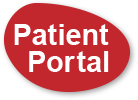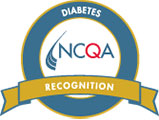To Buy Zestril Online Visit Our Pharmacy ↓
 Zestril Vs. Other Antihypertensives: a Comparative Analysis
Zestril Vs. Other Antihypertensives: a Comparative Analysis
Zestril, a well-recognized brand name for lisinopril, stands out in the bustling arena of antihypertensive medications. With its sterling reputation, it has become a cornerstone in the treatment of high blood pressure, heart failure, and other cardiac-related conditions. As an ACE inhibitor, Zestril uniquely targets the renin-angiotensin-aldosterone system (RAAS), a pivotal regulatory mechanism of blood pressure and fluid balance. This specific approach not only aids in lowering blood pressure but also offers protective benefits for the heart and kidneys, which is particularly beneficial for patients with diabetes or mild-to-moderate chronic kidney disease.
Zestril's widespread acceptance and use are attributes not just of its effectiveness but also of its long-standing presence in the healthcare sector. Its proven track record in managing hypertension and improving patient outcomes has cemented its position as a first-line option in many treatment guidelines. Unlike many other antihypertensives that may target different pathways or have varied mechanisms of action, Zestril's ability to reduce the risk of mortality and morbidity in post-myocardial infarction patients exemplifies its integral role in cardiovascular care. Despite the emergence of newer agents, Zestril's enduring significance in the therapeutic landscape of hypertension underlines its status as the "Ace of Hearts."
Breaking down the Competition: How Others Stack up
In the landscape of antihypertensive medications, Zestril stands out for its selectivity and effectiveness, but it’s amidst a robust lineup of alternatives, each with its unique traits tailored to diverse patient needs. Beta-blockers, for instance, are prized for their dual role in managing hypertension and heart-related conditions, offering a protective layer against heart attacks. Meanwhile, calcium channel blockers present a favorable choice for those suffering from asthma or diabetes, conditions that often coexist with hypertension. These classes, alongside diuretics and angiotensin II receptor blockers (ARBs), provide a comprehensive arsenal against hypertension, albeit with varying mechanisms of action and patient suitability criteria.
Comparing these alternatives, it becomes evident that the choice of antihypertensive is significantly influenced by patient-specific factors such as existing health conditions, potential side effects, and the overall impact on daily life. Diuretics, often hailed as the first line of defense, are known for their cost-effectiveness and efficiency in lowering blood pressure levels, but they may require careful monitoring of electrolyte balance. ARBs, on the other hand, offer a more targeted approach with a lower side effect profile, making them a preferred choice for patients who tolerate ACE inhibitors like Zestril poorly. Each class of antihypertensives brings to the table its unique advantages and considerations, emphasizing the importance of personalized treatment plans in managing hypertension.
The Mechanism Marvel: How Zestril Works Wonders
Zestril, known generically as lisinopril, operates in the body as an angiotensin-converting enzyme (ACE) inhibitor. This means it functions by blocking the ACE that plays a pivotal role in converting angiotensin I to angiotensin II, a potent vasoconstrictor that elevates blood pressure by narrowing blood vessels. By inhibiting this conversion, Zestril effectively reduces the production of angiotensin II, leading to dilated blood vessels which, in turn, lower blood pressure and increase the supply of blood and oxygen to the heart. This mechanism not only helps in managing hypertension but also improves outcomes in patients with heart failure.
Comparatively, different classes of antihypertensive medications work through various mechanisms. For example, beta-blockers decrease the heart rate and the force of heart contractions, while calcium channel blockers prevent calcium from entering cells of the heart and blood vessel walls, resulting in lower blood pressure. Unlike these, Zestril’s precise action on the renin-angiotensin system offers a unique advantage, particularly for patients with specific cardiovascular conditions, demonstrating its marvel in a tailored approach to hypertension management. Such a targeted mechanism of action makes Zestril a favored option in scenarios where precise cardiovascular modulation is essential.
Side by Side: Side Effects of Zestril Vs. Others
Zestril, a widely recognized ACE inhibitor, is vaunted for its efficacy in managing hypertension, but like all medications, it comes with its share of side effects. Some of the common side effects associated with Zestril include cough, dizziness, headache, extreme tiredness, nausea, diarrhea, weakness, sneezing, runny nose, and rash. However, Zestril is often highlighted for its lower incidence of edema, a side effect commonly observed with alternative antihypertensive medications like calcium channel blockers. While these side effects are generally manageable, they emphasize the importance of a tailored approach to hypertension treatment, considering the individual patient's health profile and response to medication.
Comparatively, other antihypertensives, such as beta-blockers, diuretics, and calcium channel blockers, exhibit a different side effect profile. Beta-blockers may cause fatigue, cold hands and feet, weight gain, and sleep disturbances, while diuretics are associated with increased urination, electrolyte abnormalities, and increased blood sugar levels. Calcium channel blockers may lead to swollen ankles, constipation, and palpitations. These differences in side effect profiles underscore the necessity of personalized medicine in the management of hypertension, as the choice of medication not only hinges on efficacy but also on minimizing adverse effects to enhance patient adherence and quality of life.
Cost Comparison: Is Zestril the Economic Choice?
Zestril, known generically as lisinopril, is a staple in the arsenal against hypertension and stands out in economic evaluations when compared to a range of other antihypertensive medications. Its cost-effectiveness is underscored by its generic availability, which significantly lowers the cost barrier for patients. This accessibility makes Zestril a go-to option for healthcare providers aiming to prescribe an efficacious yet budget-friendly medication. Moreover, the longer duration of action and the once-daily dosing requirement of Zestril contribute to its cost-efficiency, reducing the overall treatment cost by minimizing the need for multiple daily doses that some alternative antihypertensives may require.
On the flip side, when comparing Zestril to newer antihypertensive drugs, such as those in the SGLT2 inhibitors class or ARBs (Angiotensin II Receptor Blockers), the cost dynamics shift. These newer medications, though potentially offering specific advantages in terms of cardiovascular protection or diabetic kidney benefits, come at a significantly higher price point. For patients and healthcare systems sensitive to medication costs, Zestril presents an appealing choice, particularly in the context of long-term therapy for chronic conditions like hypertension. Patient assistance programs for newer drugs can mitigate some of these cost concerns, but for many, Zestril remains the economically sound choice, balancing cost with clinical efficacy.
Patient Perspectives: Real-life Experiences with Zestril
Gathering insights from individuals who have used Zestril provides a multifaceted view of its effectiveness and tolerability in real-world settings. Many users report significant improvements in their blood pressure levels, often citing a noticeable reduction in readings within a few weeks of commencement. The anecdotes highlight the ease of integrating Zestril into their daily regimen, appreciating its once-daily dosing convenience. However, some patients have shared experiences of dry cough - a noted side effect that, for a few, led to discontinuation or switching to alternative therapies. These personal accounts underline the importance of physician-patient communication in managing treatment expectations and side effect mitigation strategies.
On the flip side, the dialogue surrounding Zestril isn't without its critiques. A portion of users describe a marginal impact on their blood pressure control, pointing to a need for adjunctive medication to achieve desired levels. This variability in response underscores the complex nature of hypertension management and the necessity for personalized treatment plans. Furthermore, patients have expressed appreciation for the supportive role of healthcare providers in monitoring their condition and making adjustments as needed. Through shared stories, the value of a comprehensive approach that combines medication, lifestyle adjustments, and regular medical consultation becomes abundantly clear, painting a picture of the patient journey with Zestril amidst a spectrum of experiences.
http://metabolicleader.com/images/homepage_extras/png/rotacaps.html http://abucm.org/assets/pdf/rotacaps.html https://nouvita.co.uk/wp-content/languages/new/ivermectin.html
![]()








 We are now located at
We are now located at


